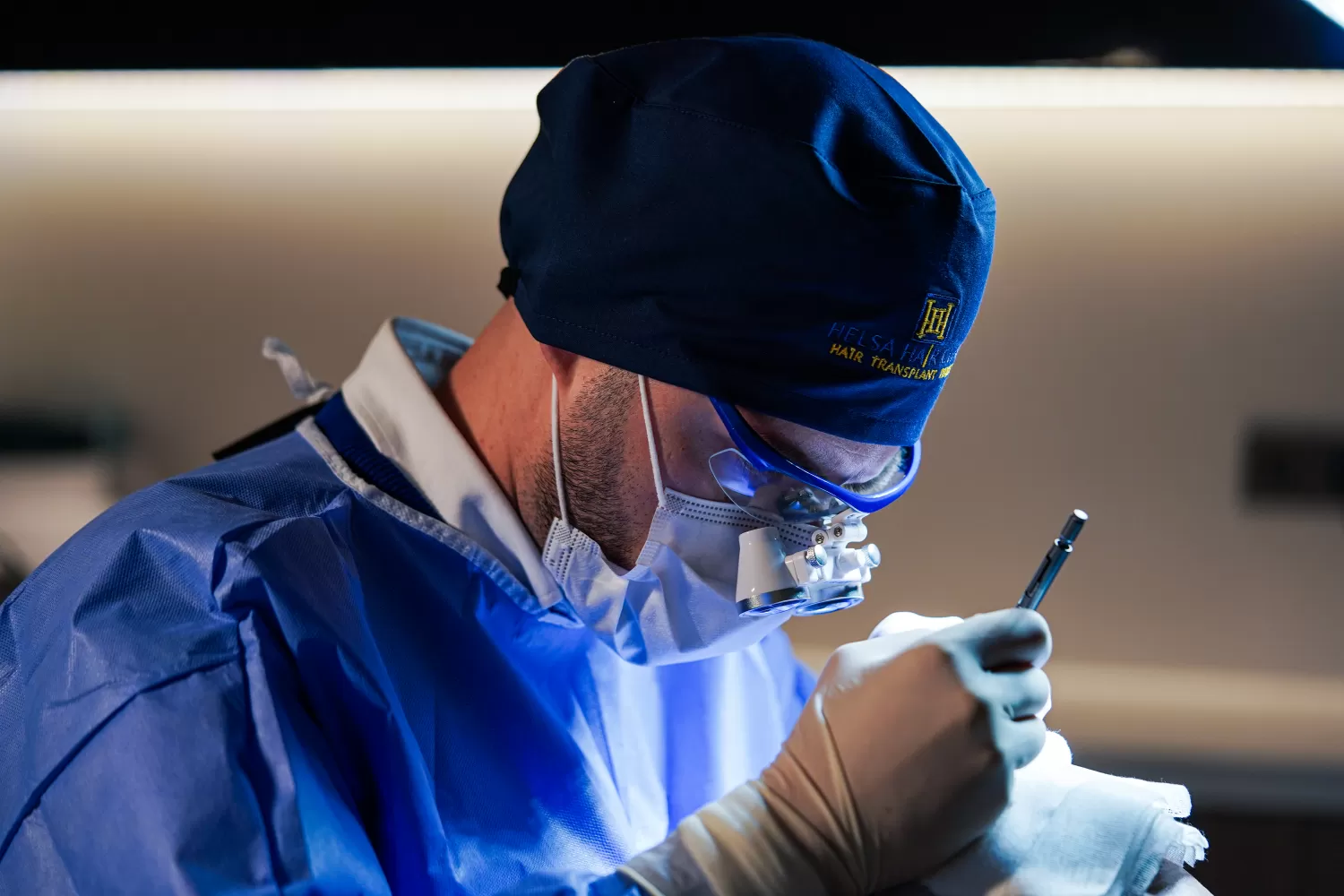What Is a Hair Transplant?
A hair transplant is a surgical procedure where hair follicles (grafts) are taken from a donor area (usually the back or sides of the scalp) and transplanted to areas with hair loss or thinning. Performed under local anesthesia, modern techniques ensure natural-looking results. The most common methods include FUE (Follicular Unit Extraction) and DHI (Direct Hair Implantation).
Who Is Eligible for a Hair Transplant?
Hair transplants are suitable for individuals experiencing genetic hair loss (androgenetic alopecia), hair loss due to trauma, burns, or certain medical conditions. However, eligibility depends on factors like age, health, and the extent of hair loss, which should be evaluated by a specialist.
Ideal Age Range for Hair Transplant
While there’s no strict age limit for hair transplants, experts generally consider the 25–45 age range to be ideal. Let’s break down why this is the case and explore considerations for different age groups.
Hair Transplants in Your 20s
Young individuals in their 20s often experience hair loss and may be eager to undergo a transplant. However, there are some concerns for this age group:
Ongoing Hair Loss: Hair loss in the early 20s is often progressive. A transplant at this stage may lead to unnatural results if new areas of hair loss appear later.
Psychological Factors: Young people may feel self-conscious about hair loss and rush into surgery. Experts often recommend medical treatments (e.g., minoxidil or finasteride) first.
Specialist Advice: If hair loss has stabilized and the donor area is strong, a transplant may be considered in the late 20s.
Hair Transplants in Your 30s
The 30s are the most common age range for hair transplants, as hair loss patterns become more predictable. Benefits include:
Stabilized Hair Loss: For most men, hair loss slows down in their 30s, making it easier to plan a transplant.
Natural Results: Donor hair follicles are typically healthy, ensuring natural-looking outcomes.
Psychological Readiness: Individuals in their 30s tend to make more informed decisions about surgery.
Hair Transplants in Your 40s and Beyond
The 40s and older are also suitable for hair transplants, as hair loss is often fully developed, simplifying planning. However, some factors need consideration:
Health Conditions: Age-related conditions like diabetes or hypertension may affect the procedure, requiring a thorough health evaluation.
Donor Area Quality: The density and quality of donor hair can influence results. Aging may weaken the donor area.
Aesthetic Expectations: Older individuals often prefer natural, age-appropriate results.
Hair Transplants at 50 and Above
People aged 50 and older can still undergo hair transplants, but additional factors must be considered:
Skin and Hair Quality: Aging affects skin elasticity and hair quality, potentially slowing recovery.
Expectations: Older patients typically aim for natural, age-appropriate results rather than a youthful look.
Health Screening: Chronic conditions and medications should be thoroughly assessed before surgery.
What to Consider Before a Hair Transplant
Before undergoing a hair transplant, keep the following in mind:
Choosing a Specialist: Selecting an experienced surgeon and clinic is crucial for successful outcomes.
Hair Loss Analysis: A dermatologist or hair transplant specialist should assess the cause and extent of hair loss.
Health Status: Blood tests and a general health evaluation determine suitability for surgery.
Medical Treatments: Discuss any hair loss medications with your doctor before the procedure.
Hair Transplant Techniques
Different techniques offer unique benefits, and the choice may depend on age and hair characteristics. Here are the most common methods:
FUE (Follicular Unit Extraction)
How It Works: Individual hair follicles are extracted and transplanted to the recipient area.
Advantages: Minimally invasive, no visible scarring, and quick recovery.
Who It’s For: Suitable for all ages, especially younger patients.
DHI (Direct Hair Implantation)
How It Works: Hair follicles are implanted directly using a specialized pen-like tool.
Advantages: Allows for denser planting and highly natural results.
Who It’s For: Ideal for patients seeking precise, dense transplants.
Recovery Process After a Hair Transplant
The recovery process varies based on age and overall health. Generally:
First Week: Mild redness, crusting, and swelling may occur.
First Month: Transplanted hair may shed (shock loss), which is normal.
3–6 Months: New hair growth begins.
12–18 Months: Final results become visible.
How Age Affects Recovery
Younger Patients: Tend to recover faster with quicker hair growth.
Older Patients: Recovery may take slightly longer, but proper care ensures successful outcomes.
Frequently Asked Questions (FAQs)
1. Am I too young for a hair transplant?
Hair transplants are generally not recommended in the early 20s, as hair loss may still progress. However, if hair loss is stable and the donor area is suitable, a transplant may be considered around age 25.
2. Can I get a hair transplant after 50?
Yes, individuals over 50 can undergo hair transplants. However, health conditions and donor area quality must be evaluated beforehand.
3. Is a hair transplant painful?
Hair transplants are performed under local anesthesia, making the procedure virtually painless. Mild discomfort may occur post-surgery but is typically temporary.
4. How long does it take to see hair transplant results?
Final results are usually visible within 12–18 months. Shock loss may occur in the first few months, but this is a normal part of the process.
5. Can women get hair transplants?
Yes, women can undergo hair transplants. Female hair loss often occurs diffusely, so transplant planning may differ from men.
6. What is the best hair transplant technique?
The best technique depends on your hair type, extent of hair loss, and goals. FUE and DHI are the most popular and effective methods.
Conclusion
Hair transplants offer a permanent solution to hair loss, restoring confidence and appearance. While the ideal age is typically between 25 and 45, successful outcomes are possible at any age with proper planning. Key factors include stabilized hair loss, a healthy donor area, and a thorough evaluation by a specialist. If you’re considering a hair transplant, choose an experienced clinic, clarify your expectations, and ensure you’re well-informed to achieve the best results.





No comments yet. Be the first to comment!